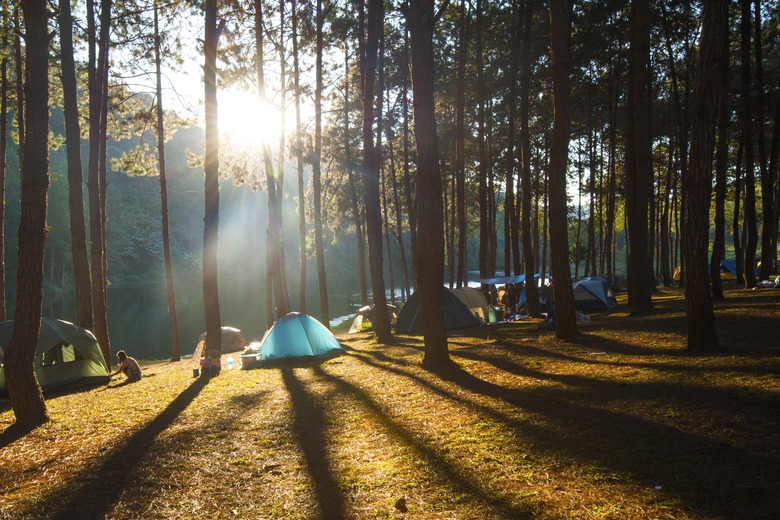Wildlife Conservation Project Ideas For Kids
If you love animals and care about protecting their natural habitats, wildlife conservation organizations would welcome your help. Protecting endangered species and restoring their living environment to healthy conditions is a big job. But it gets smaller if people, young and old, pitch in and show their commitment to protecting wildlife for future generations by participating in wildlife conservation projects. Take a look at the many project ideas for kids and get started making a difference today.
Habitat Restoration
Habitat Restoration
Floods, disease and invasive species can destroy the balance of life in a habitat by wiping out the local flora and fauna, affecting the native wildlife's food supply. You can help by replanting the area with native plant species. Check with local environmental organizations to identify the areas of need and schedule a habitat restoration project or join one in progress.
Wildlife Survey
Wildlife Survey
In order to know how to best focus their conservation efforts, wildlife organizations need to keep an eye on the comings and goings of an area's creatures. The more they know about the animals' habits, behavior and population, the better they can identify the areas of greatest need on which to concentrate their resources. While you are hiking in wildlife areas, keep a record of the type, number, location and behavior of the animals you observe, large and small. Share the results with a wildlife officer in charge of the area to help him plan future conservation projects.
Litter Cleanup
Litter Cleanup
Litter introduces toxins and physical dangers into wildlife habitats that put animals at risk of entanglement, poisoning or injury. Picking up that trash is one of the simplest ways to protect wildlife from unnecessary harm due to human activity. Anywhere you go — parks, beaches, wilderness areas, hiking trails or your own neighborhood — make a habit of picking up trash. Clean up your own trash when you go camping and don't leave it behind to pollute the animals' home turf. Ask local environmental organizations for dates and places of scheduled cleanup days.
Storm Drain Stencils
Storm Drain Stencils
Everyday activities such as gardening, washing cars and walking pets leave chemicals and waste products on lawns and streets that get washed into storm drains. Some people mistake storm drains for sewers and dump lawn clippings, chemicals, motor oil and other wastes into the water supply. Unlike sewer drains, storm drains run directly into rivers and streams without passing through a treatment plant. This means any added waste pollutes the water supply downstream and endangers animals that depend on this water. Storm drain stencils warn others of the dangers and remind them not to dump their waste in the drain. Ask the water department or clean-water agency about organizing a stenciling project with your family and friends.
Backyard Habitat
Backyard Habitat
Wildlife conservation can start at home, in your own backyard. Research the type of trees, bushes and flowers that attract the birds, butterflies, insects and other animals native to the area. Set out a bird bath, bird feeders and shallow ponds. Fallen logs and rocks provide shelter and a resting place for the wildlife that use the habitat as a sanctuary from the noise and overcrowding caused by human activity that is destroying their natural habitats.
Cite This Article
MLA
Hooser, Tamara Christine Van. "Wildlife Conservation Project Ideas For Kids" sciencing.com, https://www.sciencing.com/wildlife-conservation-project-ideas-kids-8652413/. 24 April 2017.
APA
Hooser, Tamara Christine Van. (2017, April 24). Wildlife Conservation Project Ideas For Kids. sciencing.com. Retrieved from https://www.sciencing.com/wildlife-conservation-project-ideas-kids-8652413/
Chicago
Hooser, Tamara Christine Van. Wildlife Conservation Project Ideas For Kids last modified March 24, 2022. https://www.sciencing.com/wildlife-conservation-project-ideas-kids-8652413/
